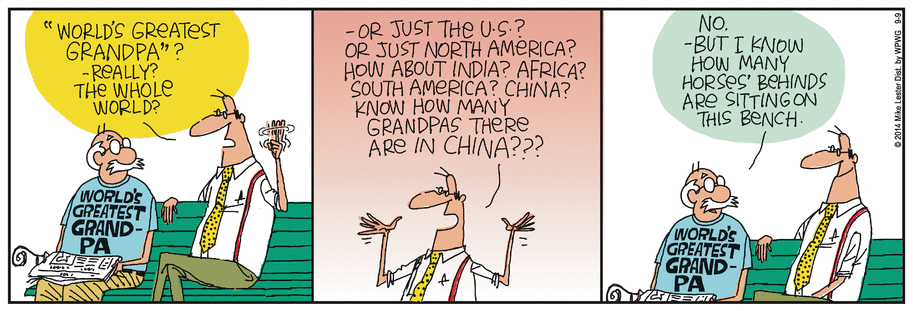It looks like spam filters have been improved recently -- there's a dramatic drop off in non-human comments. But a few gems still managed to get through...
Fractured phrases
- What i do not realize is actually how you're no longer actually much more neatly-liked than you may be now. You already know therefore signficantly in terms of this subject, made me in my view consider it froom a lot of various angles. Your own stuffs outstanding. Always handle it up![Handle it up? I can't even handle your syntax!]
- You manages to hit the nail upon the highest as smartly as defined out the entire thing with no need side-effects , folks can take a signal.
[You heard the man -- take a signal, people!]
- Thank you, it was very interestingly!
[You're welcomely.]
- When some one searches for his essential thing, so he/she wishes to be available that in detail, thus that thing is maintained over here. When someone writes an piece of writing he/she retains the image of a user in his/her brain that how a user can understand it.
[I'm having a hard time picturing the he/she/it that wrote this.]
 |
| Who would have thought that lumber truck in the foreground would generate so much commentary? |
- This is very interesting. I've shared your websites in myy social netowrks! Here is my homepage Miami exotic car Rental.
[Soooo, this toy truck relates to exotic rental cars because... it's from Japan?]
Great article. My page... click here
[It's like they're not even trying anymore.]
Wow, this paragraph is pleasant, my sister is analyzing these kinds of things, so I am going to inform her.
[Your sister needs a new hobby.]
Fastidious fades
For a while, a significant number of spam posts used, or rather misused, the word fastidious. Over the last few months, I've only received a few. Perhaps their translations programs have been updated.I am a regular visitor, how are you everybody? This article posted at this web page is truly fastidious.
[Well, we try.]
And that's all for the first month of year. Remember, always hit the nail in the highest, and your truly fastidious efforts will make folks take the signal -- with no harmful side-effects.




























